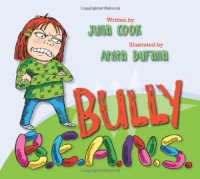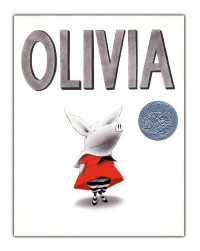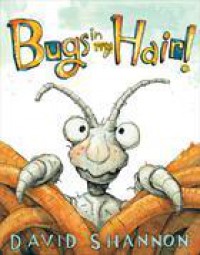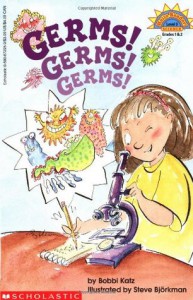Books worth reading to students
The Boy with Pink Hair

I found this book while I was bargain shopping one day. At first glance, I thought this book would not be very good just because the topic seemed so crazy to me at the time. After I read the book, I definitely changed my mind. I literally judged a book by it's cover. This happens to be the same ideal the story focuses on. I think that this book would be great for third and fourth graders. It has an ATOS level of 3.7. It covers the topic of bullying, peer pressure, and gender stereotyping in a light hearted way while also using more advanced language. It would be a great way to open the door to a discussion about gender equality and even teamwork. Wits program.ca has a great activity to use an extension to this book. The teacher could pair students with partners of the opposite sex. Each pair could discuss talents or things that make their partner unique. The students could write three to five sentences about things that make their partner unique and illustrate them. They could share these with the class and also display them on a bulletin board. This could promote a loving environment for all students in the class.
A Bad Case of Stripes

This book has always been one of my favorites. The illustrations and the story are so appealing and easy to connect with. It also has a comical aspect to it. I think this would be a good book to use with second and third graders. The exile level of this book is AD540L. When I was in a third grade classroom, I noticed that the students were being introduced to peer pressure. I believe that this book goes hand in hand with this topic. On teacherspayteachers.com, there are some great activity sheets that review cause and effect using this book. I think these activity sheets would be a great way to get students thinking about how Camilla felt and about peer pressure. On Pinterest, there was another activity that I think could fit well with a lesson on peer pressure. The students colored a self portrait that had rainbow stripes just like Camilla. Then the students wrote three to five sentences about a time they felt embarrassed. Each idea would open the door to having a discussion about peer pressure.
Bully B.E.A.N.S.

This book could introduce the topic of bullying to students. I really like how relatable this book is to younger students. So I would read this book to younger students mostly. This book has an ATOS level of 3.6. I would read this book to my class during the first week of school. I saw two cool ideas on Pinterest that involved using this book. After reading this book, each student could get their very own bean cut out from construction paper and write ways to stand up to bullying on it. The teacher could make a banner that has a jar on it and a cute phrase about the book and bullying. All of the beans could go on the jar banner. I liked this idea because having the visual could be a good reminder to students throughout the school year. The teacher could even take it a step further and explain the difference in tattling and reporting bullying with the next idea. A teacher had two jars, a tattling jar and a reporting jar. As the teacher read scenarios, the students placed a bean in the jar that they thought described it. This would be a great way to eliminant tattling in the classroom. I also think it would be a good idea to compare and contrast how the bully of the book felt at the beginning, middle, and end of the book so that students put themselves in her shoes. They could do this using an activity sheet.
The Juice Box Bully

I really like this book. This book is a great way to introduce the topic of bullying to students. I think this book would be more beneficial for second and third graders. The language in it and the situation seems to fit better with those grades in my opinion. In class we talked about asking students to be up standers instead of bystanders of bullying. So I think it would be fun and beneficial to have students color their own juice box and write what kind of things an up stander to bullying would do on them. The juice boxes could be taped to the door or the bulletin board. The students could pledge the promise in the back of the book or even create their own as a class. This promise could be placed with the juice boxes as well.
Penny and Jelly

I found this book one day while I was bargain shopping and fell in love with it. There are so many children out there who feel they do not have a talent. This book speaks right to those children. I would read this book to any grade but the ATOS level is 2.3. I came across one of those first few days of school activities on Pinterest where students wrote a little paper booklet about things they were good at. I believe this activity would be a wonderful extension to do after reading this book. Students could write the following phrase on each page of their booklet and illustrate it: "I am good at ___________." This would be a great way to show students that they are all talented in different ways and each are important. After all of the booklets are made, students could have a book reading party where each got to share their talents.
Olivia

This book is about a pig named Olivia who is very active. I believe this book would be mostly enjoyed by younger grades. The Lexile level of this book is AD270L. I believe this would be a good book to use when discussing comparing and contrasting. The students could complete a venn diagram contrasting themselves and Olivia. For an extension, the students could play a game where they wonder around the room until the music stops. Once the music stops, pair up with the nearest student. Then they could compare and contrast themselves an their partner. I think this would be a great way to open a discussion about differences and acceptance.
Aliens love Dinopants

This book is a fun and hilarious story that I believe younger grades would enjoy most. The Lexile level of this book is AD440L. I have many different ideas for lessons using this book but I think it would be best to focus on rhyming. While reading the book, the teacher could have students help point out all the words that rhyme. After the book has been read, the teacher could give each student a rhyming word used in the book. Then have each student find another student whose word rhymes with their word. Basically, students would have to find their rhyming word match. For an extension, the teacher could even have the class come up with their own story using the same rhyming words. Each match could come up with sentences for their two words.
Bugs in my Hair!

This book discusses a topic that is not very appealing in a fun and creative way. This topic is lice! I believe this book would be a good one to share with any grade. The exile level of this book is 390L. This could be a great way to open the door to a discussion about health. There is also a writing activity I had heard of that was an extension of this book. The students were asked to complete the following phrase: "I woke up one day and had _______ in my hair!" Once they filled in the blank, they had to illustrate the sentence and write at least three more sentences about it. This allowed the children to use their imagination.
Chrysanthemum

This is a book that features a rollercoaster of emotions and has a happy ending. This would be a good book to read with any grade. The Lexile level of this book is 460L. For younger grades, the teacher could focus the lesson on emotions. The teacher could have students identify all the different emotions Chrysanthemum felt throughout the book. They could do a writing activity where they identify times that they have felt the same emotions Chrysanthemum felt. For older grades, teachers could go more in depth and talk about feelings she had at beginning, middle, and end of the story. Students could even compare and contrast Chrysanthemum and themselves.
Hooray for Reading Day

This book could definitely help struggling readers gain a little more confidence. It would be a good book for teachers to read to younger students. The Lexile level of this book is AD380L. This book could help introduce a lesson on problems and solutions. Before reading, a teacher could host a discussion about the word problem and ask students what they think the word means. After reading, the teacher could discuss the problem Jessica has in the story. The students could discuss solutions. I would even tell students that if any feel the way Jessica did about reading to take to me about it and we could work on it together. Students could make their own reading goal and I could help them reach it.
The Giving Tree

This book shows how to be giving. I believe that this book would be good to use with mostly older grades. The Lexile level is 530L. There are many different directions a teacher could go using this book. I think it would be fun to do a writing lesson and make a bulletin board. The bulletin board could have a tree on it. The students could write characteristics of a giving person, some people they know who are giving, and how they could be giving to others on the leaves. Each leaf could be stapled to the tree on the bulletin board. Throughout the rest of the week and maybe even longer, students could share how they were giving to others. A great time to do this is right before students pack up to go home.
There was an Old Lady who Swallowed a Bat
![[(There Was an Old Lady Who Swallowed a Bat! )] [Author: Lucille Colandro] [Aug-2005] - Lucille Colandro](http://booklikes.com/photo/max/200/300/upload/books/1/5/15675be6da617e78d72cfd897b5b34be.jpg)
This book is a halloween twist on the story, There was an Old Lady who Swallowed a Fly. I believe that any grade would enjoy this book. The Lexile level of this book is 400L. For younger grades, you could do a lesson on sequence of events. The children could be given an item that the old lady ate and have to line up in the correct order. You could even collaborate with the music teacher to make the story into a play. Each child could be given a certain role and get to make a costume. For older grades, you could do a health and writing lesson. Each child could make the old lady's stomach out of clear wrap and paper bags. They could place the items she ate in the bag and then items that would be healthier. The students could write about healthy alternatives for the old lady.
Duck! Rabbit!

This book would be great to use with younger grades such as kindergarten and first grade. The Lexile level of this book is AD20L. It features two people who discuss whether or not the animal is a duck or a rabbit. This would be great to open a lesson on differences. While reading the book, students could make predictions about whether the animal is a duck or a rabbit. After the book has been read, students could use an activity sheet to draw the rest of the duck or rabbit in their habitat. The teacher could then talk to students about how many people can see the same thing differently, but that each opinion is still important and valuable.
Germs! Germs! Germs!

This book educates children about germs. I would use this book with older grades such as third, fourth, and fifth graders but the Lexile level of this book is 170L. Before, during, and after reading, I would complete a KWL chart about germs with students on the board. As a hook to the lesson, I would get each student to put lotion on their hands (that has glitter in it) and give them three minutes to walk around putting the glitter on the board, knobs, or desks. This would serve as a visual for germs. After reading the book, I would host a whole-group discussion on all of the ways germs get in your body and ways to keep them out. Then we could play a game. To set up for the game, the teacher would need to use painter's tape to make a big circle on the floor or use chalk to make one on the sidewalk. The circle would need to be big enough for each student to jump inside. The students will pretend to be the germs in the story as it is read aloud. The students will begin by standing on the line that creates the circle. As the teacher reads the story aloud, the students will jump in the circle if the germ gets inside the body and will jump out of the circle if the germ is prevented from getting in the body. After playing the game, students could write about how they will prevent the spread of germs in our classroom. This lesson would be good to do during the beginning of the school year or around flu season.
Punctuation Celebration

This book features many different types of punctuation, a description of each, and an example using the punctuation. I would use this book with mostly younger grades such as first and second grade. The Lexile level of this book is 650L. This would be a great book for introducing punctuation. After reading the book, a teacher could put the students into groups and assign each group a punctuation mark. Each group will present a poster board that states the name of the punctuation mark, job of the punctuation mark, and an example of it. They could reference the book for help. Each person in the group would have a different job to keep the group on task. The jobs could be artist, describer, task manager, referencer, and speaker. After each group has prepared, they could all present during "rug time".
If You Give a Moose a Muffin

This book is bound to keep students interested. It follows every decision a moose makes after he gets a muffin which eventually leads back to muffins. I would read this book to kindergarten and first grade. The Lexile level for this book is AD590L. This book would be good to use when teaching cause and effect to students. Another group of students did an activity with this book for their chapter presentation. The activity had a sheet of poster board with the words "Cause" and "Effect" written at the top of it. Attached to the poster board were several muffin shaped cut outs. The "muffins" had different causes and effects written on them. These came from the book. Students were given a cause or effect muffin and placed it where it belonged on the poster board. I plan to use this activity in my future classroom.


![[(There Was an Old Lady Who Swallowed a Bat! )] [Author: Lucille Colandro] [Aug-2005] - Lucille Colandro](http://booklikes.com/photo/max/50/80/upload/books/1/5/15675be6da617e78d72cfd897b5b34be.jpg)

